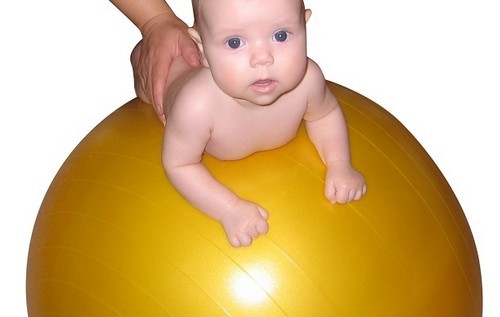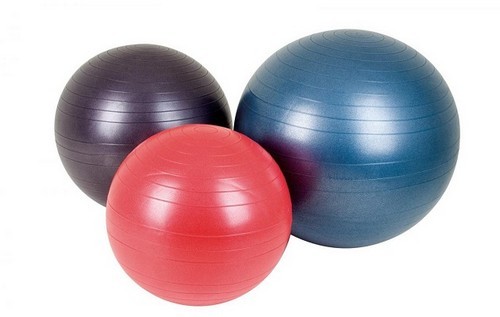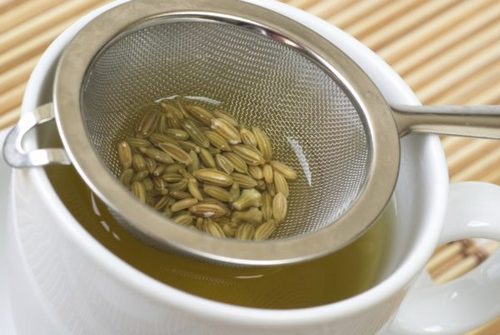Sport has a beneficial effect on our body as a whole. Therefore, it should be present in the life of any person, regardless of age, even in newborn babies. To instill in them a love of sport, it is not necessary to wait until they grow and get stronger.
This will help you classes on fitball for babies, which you can start from the first days of the baby’s life.
Fitball is a large rubber ball that was invented to rehabilitate patients with spinal injuries and central nervous system disorders. But today it has been proven that classes on fitball can bring much more benefits than it seems at first glance, especially for newborn babies.
Why do it?
Namely:
- exercises on the fitball for infants can reduce the muscle hypertonicity that occurs in every second newborn;
- regular classes contribute to the development of coordination of movements and the vestibular apparatus in the child;
- all muscle groups, and especially back muscles, are also strengthened, which has a beneficial effect on the development of the musculoskeletal system;
- the ball contributes to the mental development of the child;
- gymnastics on a fitball for infants establishes the digestive system (excellent prevention of colic), improves the work of the respiratory and cardiovascular systems.
Kids with great pleasure are engaged in fitball, smooth swaying imitate the swimming movements that he used to make while in the womb. Therefore, during gymnastic exercises, the baby feels “like a fish in water,” he is calm and comfortable.
Older children are also happy to begin exercises on the ball. Since for them it is not only a sport, but also a kind of game in which his mother takes part. And for kids it is very important that their mother spend as much time with them as possible – so they feel her warmth and care and feel her love and desire to protect them in various situations. Indeed, thanks to the games, the child learns to trust his loved ones.

Fitball selection
The basic rules for buying a fitball for classes with young children:
- for newborns, the best option would be a ball with a diameter of 75 cm;
- seams should not be noticeable;
- the material from which the ball is made must be homogeneous, and most importantly dense (see the attached instructions for it, the maximum load must exceed 150 kg);
- the nipple must be soldered inward (this is necessary so that it does not interfere during class).
Do not save on a gym ball. The choice should be stopped on the balls, whose manufacturers have already gained popularity in our country. And you can buy a fitball for babies in any specialized sports store.

Fitball exercises for babies
Classes can begin immediately after the umbilical wound heals. During this time, the baby adapts to the home environment and his daily routine will improve. It will be possible to presumably calculate the time for the exercises, the main thing is that they do not pass immediately after feeding, you need to wait about one hour, then you can safely proceed to gymnastics.
Classes should occur during wakefulness, and their duration will increase gradually. To begin with, you should “introduce” the baby to the ball, for this, sit on a chair, hold the fitball between your legs, cover it with a diaper and carefully place the baby on the tummy in the center of the ball. Swing lightly, about 5 to 7 times, and remove the ball. After a few days, the number of swings can be slightly increased.
In the process of training, in no case should you pull the baby by the hands and feet. Their radiant and ankle joints are very weak, so any awkward movement can cause injury to the baby.
Exercises with children from 2 – 3 weeks to 6 months
The following exercises help to improve the digestive system and reduce muscle hypertonicity. Mom can also perform them for quick recovery after childbirth. Such gymnastics for adults + for newborns for 2 months, helps not only solve many health problems. But also to establish contact between parents and their child.
As you know, babies at an early age have very frequent colic in the abdomen, which is very worrying for children. If this problem has touched your baby too, you can solve it using the following exercises:
- Lay the child on the ball in the center with his belly down and begin to smoothly swing, holding the baby by the back, first up and down, then make circular movements;
- Turn the baby on his back (he will resist and strain the abdominal muscles), hold him by the tummy and chest. Do weak swings in different directions. Such gymnastics for infants in 2 months will allow you to relax your back muscles and prevent micro displacement of the intervertebral discs;
- Again, turn the baby on his tummy. While holding the child by the ankles with one hand, perform jerky movements up and down with the other, pressing the crumbs on the back;
- Put the baby on the bed and put a ball to his legs, he will intensively begin to push him away, this helps to reduce muscle hypertonicity and proper development of the hip joints. This gymnastics is most suitable for babies aged 2 to 4 months.

6 months and older
When the child has grown up, more complex ones can be added to the basic exercises, which will contribute to the active development of the baby. For instance:
- Jump on the ball. To do this, attach the ball to the wall and fix it with your feet, put the baby on it and perform jumping actions up / down, holding the baby by the back.
- Another interesting exercise that will cause your child a storm of positive emotions. Lay the baby on the ball with your belly and start lifting its legs up. He will start to rest his hands on the ball and in the end you will get a kind of car.
- For this exercise you will need the help of an adult, such as dad. Lay the child on the ball belly down, you take him by the arms, and dad by the legs (only in no case grab the baby by the feet, you can by the shins or hips, and you need to grab your hands in the forearm). Begin light pulls of the baby – first in one direction, while the child’s legs should touch the ball, then in the other, only the baby’s arms and chest should touch the fitball.
- This exercise can be performed when your baby learns to grab toys on his own. Take soft toys without sharp corners and sprinkle them around the room. Lay the crumbs on the ball belly down and, holding it by the hips, roll the ball forward, inviting the child to grab this or that toy.
- Fix the ball between the legs, put the baby on it with its back, grab the child by the forearm and slowly raise it to a sitting position. Hold it in this position for several seconds, then return it to the supine position again.
If your child at the age of 8 – 9 months stands on his toes, and not on his foot, a fitball with “spikes” will help you fix this. To do this, fix the ball between the legs, put the baby on it, holding the back, make springy movements (jump). These “spikes” massage the crumbs foot, relaxing all muscle groups and beneficially affecting the central nervous system. You will see how, after just a few weeks of regular classes, your baby will begin to fully step on the foot and will soon delight you with the first steps.
Another exercise that is suitable for children aged 8 months – put the child on the floor on his feet and offer him as a support ball. At first, you can maintain a fitball, and then, if the child is confident, let it go for a few seconds.
Classes on fitball very well affect the condition of the child. He sleeps better, eats better, as he spends a lot of energy during exercise, becomes more active and more fun.



